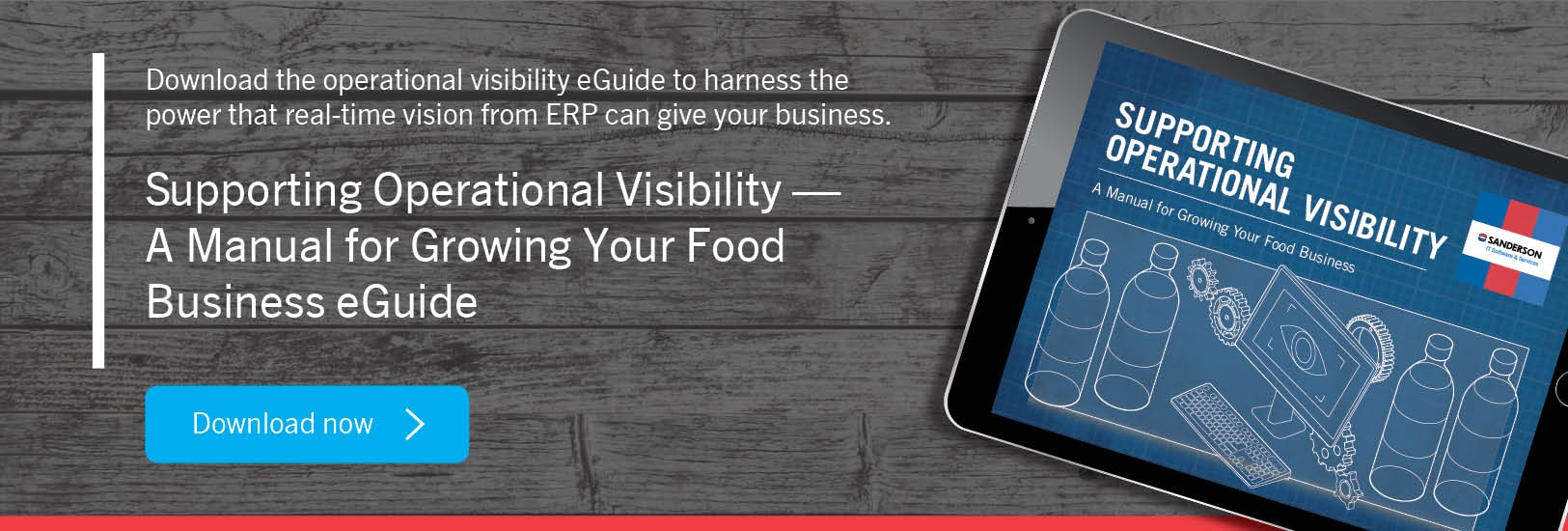Your checklist to achieve real-time vision and agility in food processing
Use our checklist to make sure you get the right specialist software for your food processing business

In this fast-paced and volatile environment, the demands on food producers have never been more onerous. Supply chains are ever-more complex, yet there is an increasing demand for traceability.
Costs are increasing, but customers remain focused on value. And in a digital world, the customer service bar keeps rising, but meeting that demand is tough for food producers plugging into a complicated ecosystem of production and distribution.
To resolve these issues while simultaneously driving profitability, food processing businesses need a much clearer view of their operations – an ability, in real time, to look across all their activities in order to proactively manage pain points and problems.
Best-of-class food and beverage manufacturing operations software offers an opportunity to achieve that goal. But as you move your business beyond yesterday’s spreadsheets and data silos, what should you look for in a software solution? Our checklist provides a starting point.

Generic or industry-specific software?
The enterprise resource planning (ERP) software space is crowded and competitive, with both generic products that can be used across many industries and sector-specific solutions. Food producers considering the former will need to think about whether generic software has the functionality to meet their needs in sufficient depth.
Action point: investigate the extent to which any new software you’re considering will work seamlessly alongside other systems on which you depend.

Production planning and scheduling
Optimising production lines is crucial for food producers seeking to protect their profitability. That means mapping resources to customer demand so that production can proceed seamlessly. Advanced software should be able to help food producers increase their production capacity without necessarily requiring any additional investment in factory space or staffing – by aligning plans with scheduling capacity, resources, and deadlines; and by controlling material requirements and even suggesting buying plans.
Action point: ask potential software providers whether their tools will help you to manage production sequences according to resources or product groups so that you can reduce factory downtime.

Factory-floor data
Paper-based data capture will slow the business, increase the potential for error, and make tasks such as reporting more difficult. Manual processes make it more likely exceptions such as ad-hoc recipe changes won’t be recorded, or that the wrong ingredient weights will go on to the system. Advanced software, by contrast, can help food processors eliminate mistakes with real-time recipe weighing guidance, and speed up response, linking staff through touchscreens and tablets, and enabling direct instructions to machinery.
Action point: look at how data capture from the factory floor can generate insights into your business’s gate controls, yields, labour costs, factory downtime, and use of resources.

Inventory control and warehouse management
Wasted ingredients that expire before they are used take a big chunk out of food producers’ profitability. Advanced software should give businesses tools with which to manage stock control more efficiently, cutting out the need for stock takes with real-time data on inventory movements, both within a single site or across many sites. Barcodes, RF scanning, and voice-activated picking solutions add to the mix.
Action point: does the software you’re considering also offer improved handling of finished goods to support superior customer service – for example, through support for picks by load, order, vehicle, or any other criteria important to your operations?

Traceability and standards control
Customers increasingly demand information about the provenance of every ingredient, but with complex supply chains, it can be difficult to meet this need. Issues such as allergens or specialisms – from vegan and vegetarian products to Halal food – bring similar complications. Best-of-breed software should make it easier to control and monitor the rotation and specification of all inventory -- meeting all relevant quality standards.
Action point: ask potential software suppliers how their products will help you manage audits or improve your reporting practices.

Procurement
For food processors dealing with fixed amounts of space and often limited-life ingredients, procurement is a difficult balance between ensuring there is sufficient stock to meet demand without incurring wastage or causing cashflow issues. Food producers can use software to control their procurement in accordance with the rules they set on criteria such as stock levels and minimum order sizes. These tools will also make it easier to track orders.
Action point: will a potential software solution make recommendations to improve your buying plans based on the data your business generates?
Key takeaways
Specialist operations software designed for the food industry will offer more bespoke functionality than a generic ERP solution.
Take the time necessary to think about what you want to achieve with a software implementation, and then look for a solution that delivers your needs.
Consider how new software will operate alongside your existing IT infrastructure.
Topics: Food & Drink, Manufacturing




